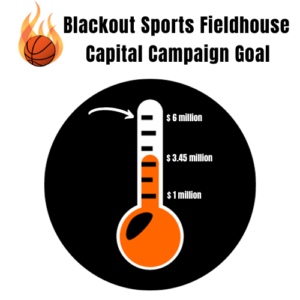A season-ending injury can be difficult for young athletes physically, mentally and emotionally. From understanding the seriousness of the injury to rehabilitation goals through physical therapy, incorporating mental health is essential when recovering from a sports injury. To learn more about the psychology of recovering from a sports injury, read the advice from our expert partners at the Sports Medicine Center at Children’s Hospital Colorado.

Credit: Children’s Hospital Colorado, The Psychology of Recovering from a Sports Injury
Incorporating psychology in sports injury rehabilitation
Let’s say you tear your anterior cruciate ligament (ACL). Chances are, you know it’s a season-ending injury, though not usually a career-ending one. It’s serious. It will require surgery and several months to heal.
But what exactly does it mean? What does the ACL do, why is it important, and why can’t you just tape it up and get back on the field?
Understanding your sports injury
No matter what type of injury you have experienced, it’s important to understand your injury so you can have a successful recovery. Visualization, for example, is a great place to start. If an injury happens to your knee, you need to understand the anatomy of the knee, why it’s structured the way it is, why it got hurt and how it functions in performance. This can further help address why we’re doing the exercises we’re doing in physical therapy.
Breaking your injury down in understandable way is important because injuries can often take a psychological toll.
The importance of goal setting in rehabilitation
Rehab from a serious injury — whether it’s a bad sprain, a ligament tear or a broken bone — takes hard, tedious, sometimes painful work. It takes a lot of perseverance.
To maintain that kind of attitude, our athletic trainers recommend using SMART goals. SMART goals are goals that are:
- Specific
- Measurable
- Attainable
- Realistic
- Time-specific
For example, sustaining an injury on a Thursday and wanting to play by Saturday is specific, but isn’t realistic. But during rehab, athletes are asked to set incremental goals that meet the SMART criteria. Visualizing the process — understanding how today’s mobility exercises lead to walking and how tomorrow’s strength exercises lead to running and jumping — can help those goals make more sense.
In the end, setting SMART goals helps athletes get back to playing more efficiently, and helps ensure a healthy headspace for better performance.
The final step of sports injury recovery
When an athlete sustains a sports injury on the field, the last step to recovery is sometimes not a physical one, says our sports medicine physical therapist Mimi Renaudin. Often, it’s mental.
“More than just the limb gets injured,” says Renaudin. “The athlete’s trust and confidence in that limb is injured, too.”
That’s a problem, says Renaudin, because when athletes fear re-injuring a limb they don’t trust, they’ll naturally put more strain on the non-injured limb. When that happens, ironically, both limbs are at increased risk of injury in sports.
The importance of performing symmetrically in athletics
At Children’s Colorado, physical therapists like Renaudin make sure athletes are performing symmetrically — meaning they rely on both limbs equally — before clearing them to return to the field. Often, athletes don’t even realize they’re compensating.
“The physical therapy gym is a very artificial environment, and planned physical therapy exercises are easy to anticipate and cope with,” says Renaudin. “It’s the unplanned sports activities where you see that lack of trust come in.”
For example, a soccer player might need to cut around an opponent, and might unconsciously plan to pivot using the favored leg. But if the opponent fakes and goes the other way, the athlete needs to make a snap decision. In a situation like that, unhesitating trust in the limb maximizes performance and prevents another sports injury.
Sports physical therapy helps athletes get mentally back in the game
Renaudin uses a number of rehabilitation techniques to help athletes find and correct errors in their post-injury form. Sometimes she films them. Other times, she acts as an opponent.
“If they need to cut around someone, then there’s an actual physical body in front of them, instead of just an orange cone,” says Renaudin. “Not that I’m going to block or do anything crazy.”
It’s just one of the ways Renaudin and physical therapists like her help athletes mentally prepare to get back in the game. A season-ending injury can exert a big emotional impact on an athlete.
When athletes need extra mental health support
For athletes struggling with the recovery process, Renaudin can refer to a mental health professional. Children’s Colorado’s Sports Medicine Center offers a full range of athlete injury-recovery services, from orthopedic surgery to evidence-based mental health treatment for overcoming symptoms of anxiety and depression.
“Some kids get hurt and their world is just completely rocked,” says Renaudin. “That’s totally normal. Sometimes they just need that extra motivation to get on board with rehab so they can get back on the field.”

Credit: Children’s Hospital Colorado, The Psychology of Recovering from a Sports Injury



